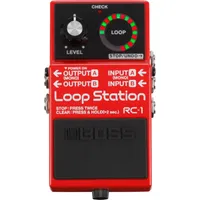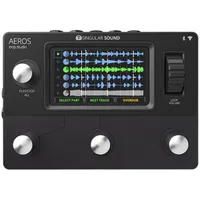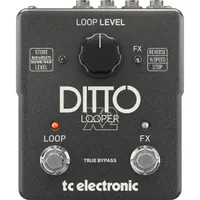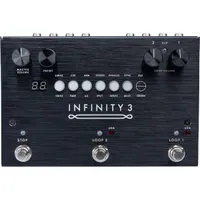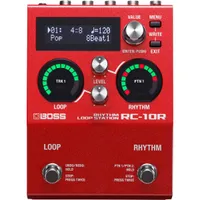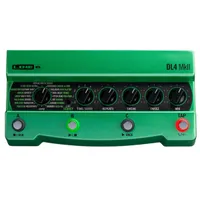Best looper pedals 2025: options for practice, songwriting, and live performance – tried and tested by an expert
My pick of the best loop pedals across every budget, including full reviews, in-depth testing, and buying advice
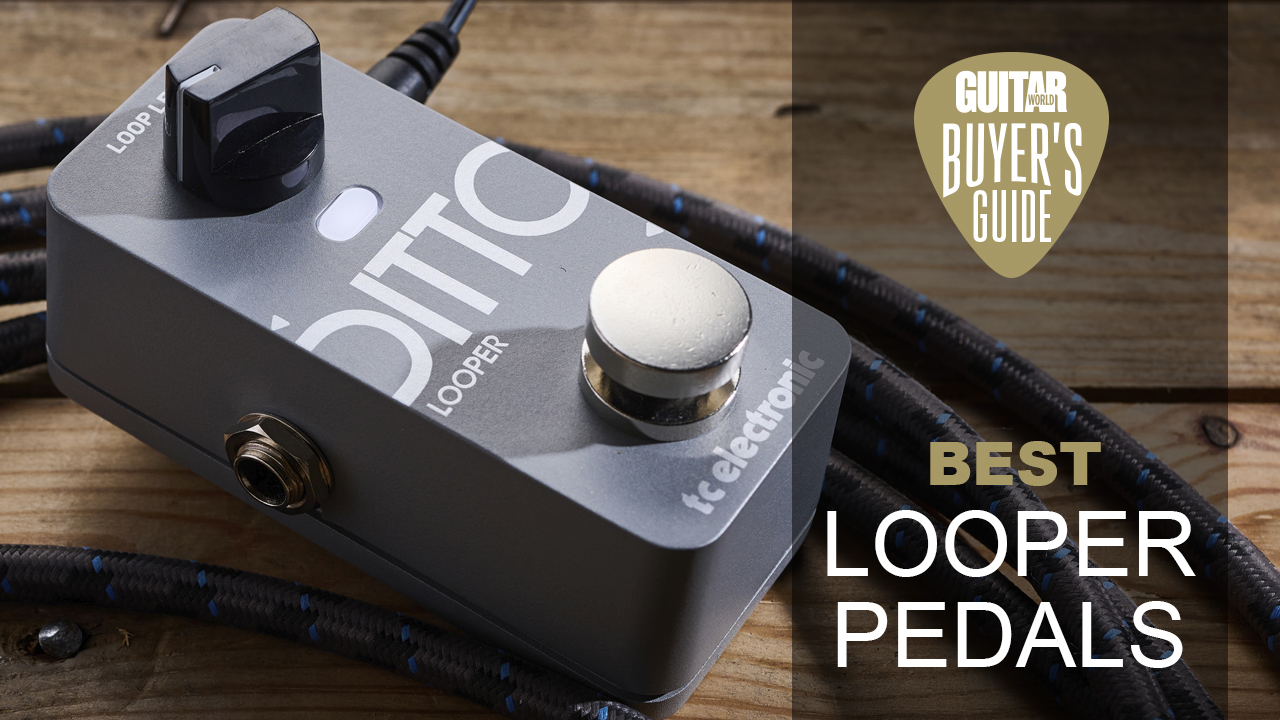
Adding one of the best looper pedals to your 'board can do wonders for your playing. A looper pedal records a short phrase of your guitar playing, then loops it back continuously, allowing you to layer parts which can be a boon for your lead playing and songwriting. I’ve been playing guitar for well over twenty years now, and I’ve used plenty of looper pedals in my time, whether messing around with minimalist loops at home, using them live on stage, or testing them in my review work.
I’ve put every single one of the top six looper pedals in this guide through its paces personally, and in my opinion, these really are the best out there. Whether you want something to practice at home with, or a fully fledged loop station for complex arrangements or live performances, all of these pedals will do a brilliant job at their given task. All will do basic looping accessibly, but some excel at certain functions better than others, so if you’re not sure what to go for, allow me to steer you in the right direction.
All of these pedals will do the job of basic looping, but for me, the Boss RC-5 is the best all-rounder. It’s compact enough to fit on most ‘boards, easy to use for beginners, yet offers plenty of depth if you want to use it for more complex tasks or live performances. If you just want to dip your toes into looping, then the TC Electronic Ditto 2 is available for a very reasonable price, coming in at just above the $100 mark at most retailers. It can handle most basic looping tasks, and is super compact too.
If you’re new to looping, I’ve curated a bunch of sections that will help guide you through making the right buying decision. I’ve used my years of experience to put together a how to choose guide which will get you pointed in the right direction, there’s also a glossary of key terms to decode looper-specific lingo, an FAQs section with commonly asked questions, and a small section on how to use a looper pedal once you finally get your hands on one.
- On the hunt for guitar gear savings this Black Friday? Shop our handpicked selection of the best Black Friday guitar deals and Black Friday guitar pedal deals.
My top picks
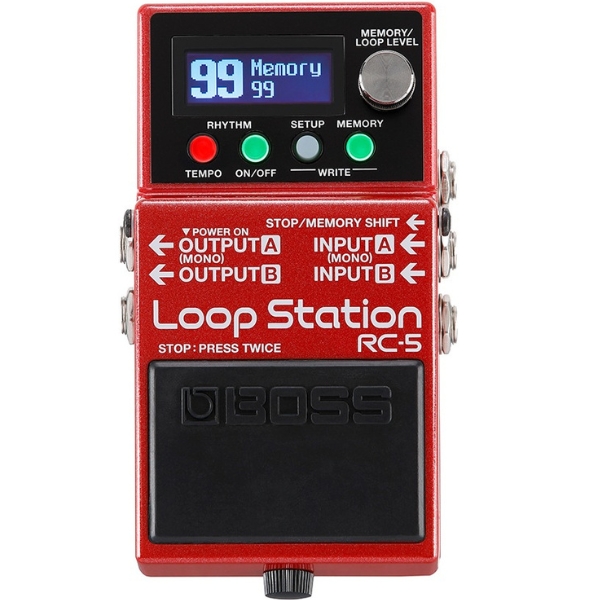
Compact, yet powerful, reasonably priced but with a myriad of features and 32-bit audio quality, for me, the Boss RC-5 Loop Station is the best looper for the vast majority of guitar players.
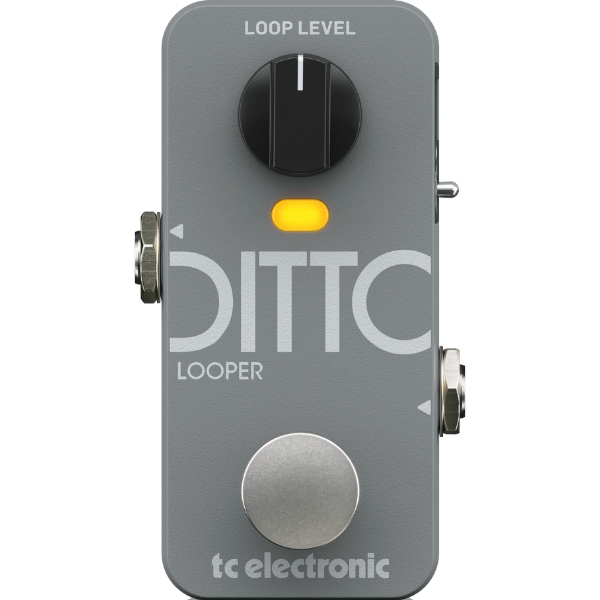
If you’re looking for a low-cost way to add looping to your pedalboard, I’d highly recommend the TC Electronic Ditto 2. Priced at just above the $100 point, it’s a great, simple looper for enhancing your practice regimen or doing basic live looping.
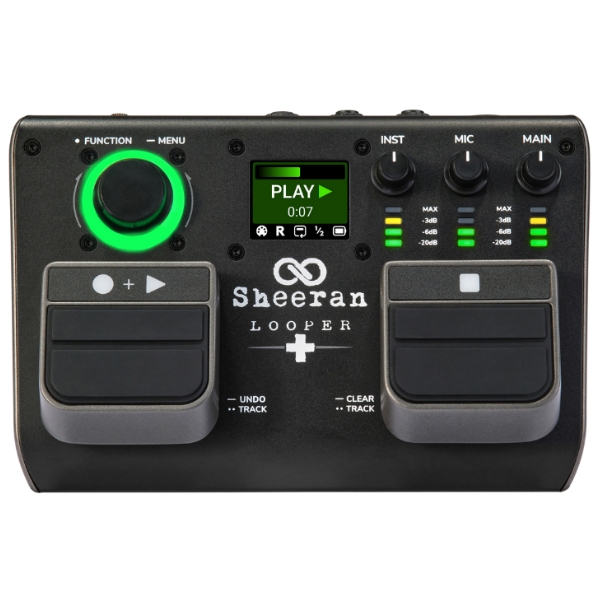
Although it’s not a super cheap option, I picked the Sheeran Looper+ for beginners thanks to its ease of use and dual footswitch design. It’s the perfect gateway drug into looping with a flexible range of features.
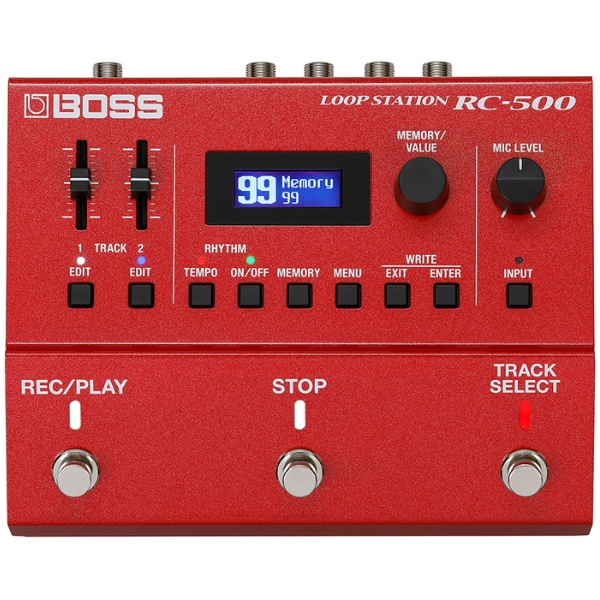
With a ton of depth and a super handy dedicated stop button, the Boss RC-500 would be my choice for live looping. The stereo connectivity and mic input mean it will cover a range of roles, and it's incredibly well built as you'd expect from Boss.
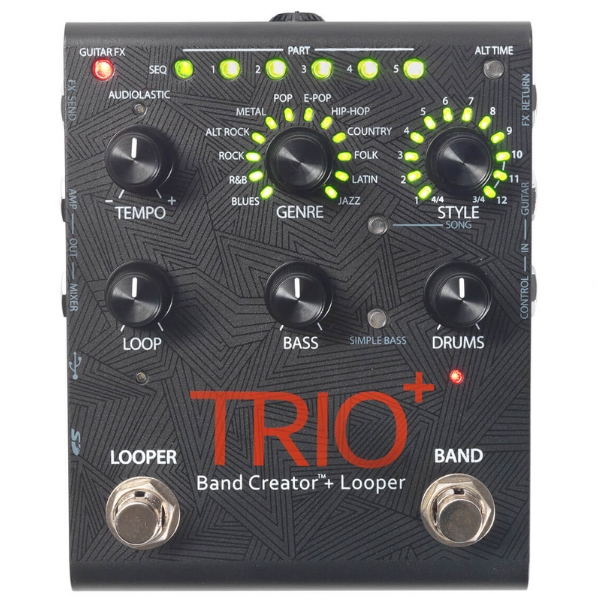
If you want that 'band-in-a-box' experience from your looper pedal, the Digitech Trio+ features a huge array of sounds and styles to jam along to. Reacting to your playing input, it creates bespoke backing tracks at the push of a few buttons, making it a very powerful playing companion indeed.

If you want to compose complex loop arrangements with ease, the Boss RC-600 is your best bet. It's not cheap, and it takes up a lot of room, but it's incredible just how easy it is to get dense loop sounds off the ground with very little fuss.
Best overall

Specifications
Reasons to buy
Reasons to avoid
🔁 The Boss RC-5 is for any guitarist who wants a powerful but easy-to-use looper. Packing loads of great functionality into the traditional Boss stompbox chassis, it’ll work for practice, writing, or live performance equally well.
✅ Buy if
You want a looper pedal that can cover the vast majority of uses without taking up too much space.
❌ Avoid if
You’re a regular live performer who needs a dedicated stop button built into your looper pedal
Build quality: ★★★★½
Usability: ★★★★½
Sounds: ★★★★½
Overview
Boss’ RC series of loopers are amongst the most popular in the world for good reason. Robustly built, powerful, yet easy to use, the Boss RC-5 sits in the Goldilocks zone for me when it comes to looper pedals. It’s equally well suited to practicing at home, writing fresh song ideas, and being used as a live performance tool thanks to its excellent storage.
Build quality
With it being a Boss guitar pedal, you know what you’re getting in terms of build quality. It takes that classic form factor many guitarists know and love, eschewing the typical knobs in favor of a small screen that displays which loop memory you’ve selected, and when it is in use, how far through that particular loop you are.
I have zero qualms about its ability to put up with repeated stomping. Even the knob that sticks out a little bit and could potentially take a few whacks feels incredibly robust, and it won’t be going anywhere even if it suffers from the occasional misplaced boot. It’s got that typical Boss build quality, which we all know can last for decades.
Performance
During my testing of the RC-5, I was able to get up and looping straight away without having to look into the manual. The fact that it tells you to ‘press twice’ to stop the loop certainly makes it easier, but if you’ve ever used a looper before, you won’t have any problems here. I did have to look online to find out how to undo and redo the loops, which requires you to hold down for two seconds, but everything else is very intuitive.
The screen is a really handy visual aid, and it changes color to let you know what mode you’re in. When recording a fresh loop it turns red, when playing back the screen is green, and when you’re overdubbing, it turns yellow. Four bars show the tempo of your loop, with another bar below that shows the overall progress. It makes it super easy to start layering things, especially if you have overdubs that come in on the offbeat.
The RC-5 also has a quantize feature, which can help tighten up your timing. I’m not particularly partial to these as I like the freedom of giving a bit of push and pull to my loops, but for those who need strictly timed looping, it works really well. It can totally mess up your loops when it gets it wrong (or you do), so use with caution.
Disappointingly, the RC-5 doesn’t auto-save your loops, which I found out to my detriment. To save, you have to manually do it, pressing the setup and memory buttons together before selecting the write option. It’s a bit of a faff to be honest, and I’d much prefer it if the pedal just autosaved your work and let you move on to the next memory bank
The built-in rhythms are a nice touch, but the quality of the drum sounds isn’t amazing, and you have to use the effects loop of your amp to have them sound clean. I probably wouldn’t use them live, but they’re fine for practicing at home. You can set a tempo by tapping the tempo button, which then flashes once you’ve settled, and the loop will automatically adjust to it.
Summary
Out of all the loopers I tried, the RC-5 came out as the best all-rounder. Others have more depth, or better quality rhythms, but for sheer ease of use and fun-factor, the RC-5 took it for me. It’s decently priced, robustly built, and simple to use, which means for the vast majority of guitar players, the RC-5 is the looper pedal you’re looking for.
Watch our demo video:
Watch our Boss RC-5 demo video:
You can trust Guitar World
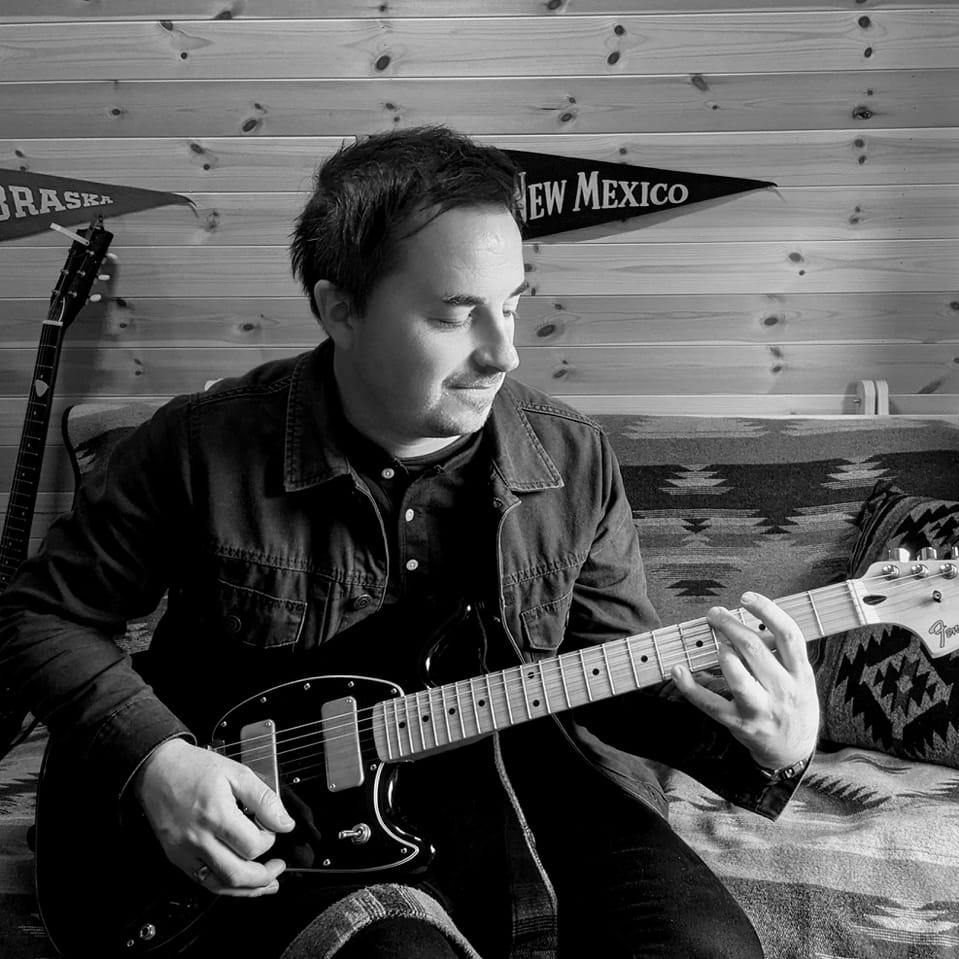
“I found it really encourages experimentation for solo players – just remember to put the RC-5 in the effects loop of your amp if you’re using its overdrive to avoid adding any unwanted distortion to the drums. The combination of all this justifies the extra cost over the RC-1, and makes the RC-5 the most impressively featured compact looper I’ve ever used.”
Read more: Boss RC-5 review
Best budget

Specifications
Reasons to buy
Reasons to avoid
🔁 If you’re looking for a complete looper on a tight budget, the TC Electronic Ditto 2 gives you a lot of flexibility for relatively little cash.
✅ Buy if
You want a low-cost looper pedal that doesn’t take up too much space on your pedalboard.
❌ Avoid if
You need the flexibility of a multi-button looper for live performances.
Build quality: ★★★★½
Usability: ★★★★☆
Sounds: ★★★★½
Overview
The long-awaited sequel to one of the most popular loopers of the modern age, the TC Electronic Ditto 2 is a tiny and low-cost looper great for busy pedalboards. Adding some clever new features while still keeping the design true to the original, the Ditto 2 has a surprising amount of depth considering its single-button operation and compact form factor.
Build quality
The all-metal chassis of the Ditto 2 leaves me with no doubts it will be fine getting repeatedly stomped on. It’s very lightweight in my hand, but still feels solidly made and well put together. It is remarkably small too, which is a massive plus if you’ve got a busy pedalboard and just want a looper for practice purposes.
I really love the large, wide, magnetic footswitch that TC has come up with for this design. It feels really nice to press either with shoes on or in your socks, and the wide design makes it quite difficult to miss. Its action is really quiet too, so you don’t have to worry about loud clicks interfering with any quieter acoustic guitar performances.
I’m not a fan of the side-mounted power input however, and it’s a similar story with the mode switch there. If you’re packing this onto a busy pedalboard as close to your other pedals as possible, you’ll have to pull the pedal off to access the switch, which could end up being pretty annoying. Ditto if you’re wiring your pedalboard, where everything typically runs out of the top of the pedal. TC has bucked the trend here by going for a side mount.
Performance
The Ditto 2 is another fantastically easy-to-use looper pedal for simple looping. Its single-button operation works similarly to the RC-5, with a single press to start looping and overdub, a double tap to stop playback, and a press and hold to clear the last loop. It’s one of the simplest loopers I’ve used and is beautifully simple to get up and running.
The LED is the only visual aid you have, changing color to represent the different modes of the pedal. Green indicates playback while purple is used for overdubs. It’s not the biggest light, but it’s plenty bright enough to see when standing above your pedalboard. There’s no rhythmic pulsing like some other loopers have, so you’ll have to rely on your ear to judge when the loop ends.
The Ditto 2 comes with ‘loop snap’ enabled, which quantizes your loops for a smoother sounding performance. It works really well at rounding off any unnatural endings to your phrases, locking things in and making up for any small differences in loop lengths. I found it worked really naturally, and allowed me to quickly and easily start layering loops that sounded in time.
You can turn it off, but you’ll need to use an app to do so, as is the case with a lot of modern pedals. The app also gives you access to the secondary ‘singletap’ mode, where the footswitch cycles through record and play modes, useful if you only need single loops. The app found the pedal super quickly too, making it an absolute breeze to get it set up with my Android phone via Bluetooth.
Despite stacking plenty of overdubs, I found the Ditto 2 to maintain its clarity really well, with muddiness only coming down to the arrangement of loops rather than the sonic qualities of the pedal. Inevitably, once you start getting to six or seven overdubs you’ll find the clarity goes. It also does a sort of auto ducking function that helps keep things clearer, whereby loop volume drops down to make room for more overdubs.
Summary
For the money, you’re getting a lot of looper with the Ditto 2. It’s not the most intuitive compared to others with fancy visual aids like a screen or revolving LED lights, but it’s still pretty easy to use even if you haven’t owned a looper previously. Factor in some neat features like quantization and a secondary single loop mode, and you’ve got a great addition to your pedalboard for practice and writing.
Watch our TC Electronic Ditto 2 demo video:

“As far as single-button loopers go, the TC Electronic Ditto 2 stakes its claim to take over from the OG Ditto with aplomb. It doesn’t do a huge amount differently to the original, but the addition of the companion app and clever ‘loop snap’ function makes it a great looper for beginners or those who just need simple functionality for their practice regimen or live playing.”
Read more: TC Electronic Ditto 2 review
Best for beginners
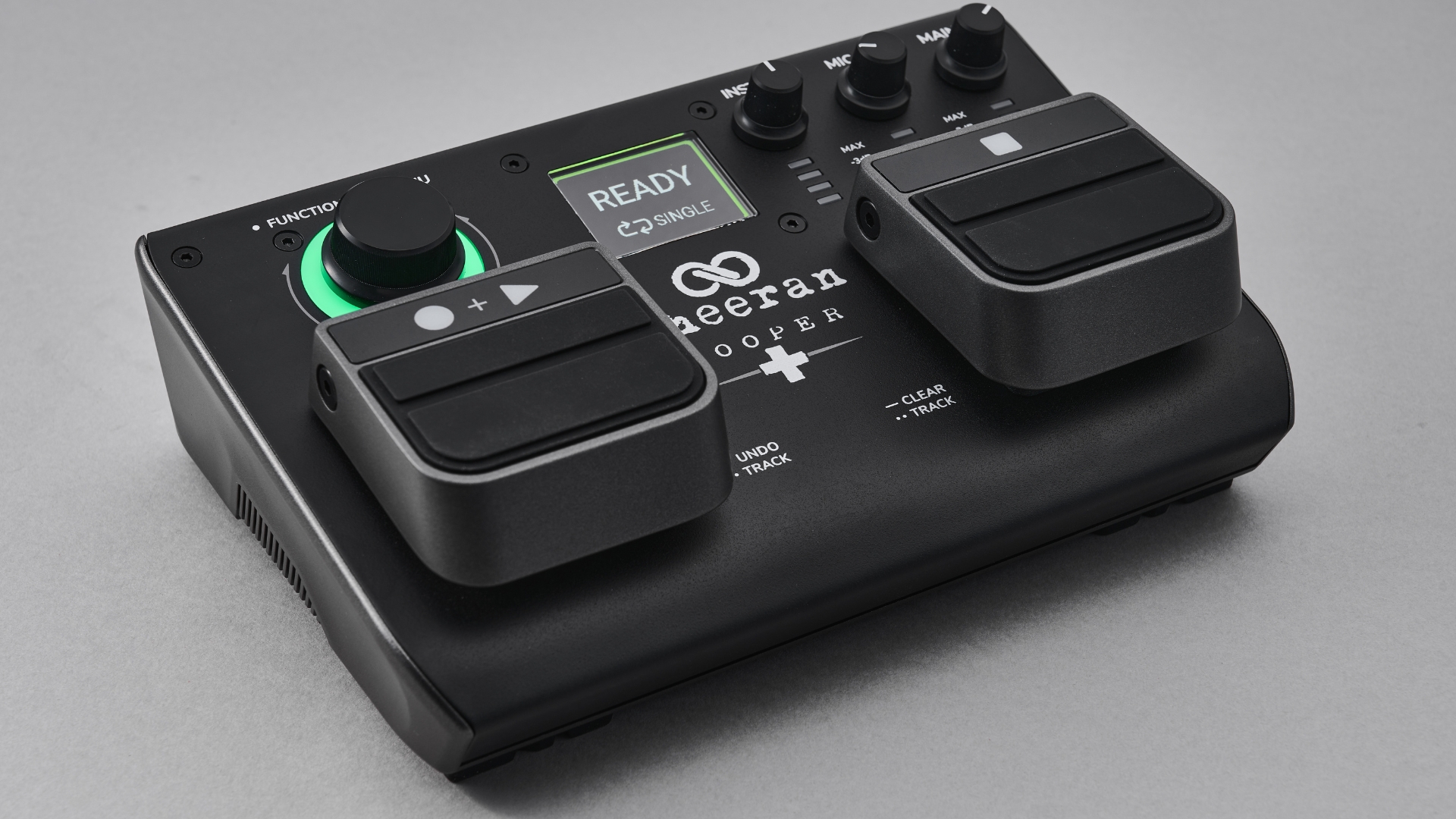
Specifications
Reasons to buy
Reasons to avoid
🔁 If you’re getting into looping for the first time and want something that’s easy to use but offers plenty to grow into, then this is the looper pedal you should go for.
✅ Buy if
You want an easy-to-use looper pedal with excellent sound quality and a dedicated stop button.
❌ Avoid if
You’ve not got lots of space on your pedalboard or prefer something smaller and lightweight.
Build quality: ★★★★½
Usability: ★★★★½
Sounds: ★★★★½
Overview
Coming from a well-known master of looping, it’s actually more of a surprise that it’s taken Ed Sheeran this long to get his own loop pedal. Well known for using Boss and later his own custom looper, the Sheeran Looper + has been designed in conjunction with the man himself and his long-time collaborator, Trevor Dawkins.
Build quality
The first thing I noticed when I pulled the Sheeran Looper+ out of the box was just how big, bulky, and heavy it is. It’s reassuringly well built, and I can’t see anyone causing any big damage to it even when stomping repeatedly. The size and bulkiness do make it less suited to being placed on a pedalboard unless you’ve got a lot of space.
In the center of the pedal, a square screen takes pride of place, with a very clear display that can be easily read from standing. A large knob to the left handles the majority of menu-diving, while individual volume knobs for the instrument and mic inputs alongside a master volume let you quickly and easily balance things. There’s also a handy LED meter for each, which live sound engineers will be thankful for.
Performance
I found the Sheeran Looper + to be incredibly easy to use for a couple of main reasons. Everything is labelled really clearly, and I like the clever symbols used to show whether you should hold or double tap a switch or button to utilise it.’s dual functionality. It meant I didn’t have to go to the manual to start doing some basic looping, but to access deeper functionality, you will need to do some reading.
The second main feature I love about the Looper+ is those massive pedals to stomp on. Looking essentially like the bottom half of a Boss pedal strapped onto the front chassis, they give you a massive platform to aim for, which is great for beginners or those who are looking to perform live on a dark stage. There’s a nice soft action to them which feels much nicer when playing in your socks at home versus a traditional pedal footswitch.
The record and play button doubles as an undo button when you hold it, easily letting you remove the last overdub if you fluffed it. The stop button will clear the entire loop if you hold it down, and it feels like the natural place for these controls to be. I have to admit having only really used one button loopers before conducting this testing, having two separate controls is a real gamechanger for easy looping.
The large dial gives you a revolving green light when your loops are playing, which is a nice visual indicator alongside the more obvious one displayed on the screen. Depending on which mode you’re in, you get a very clear description of what’s happening, whether you’re playing, overdubbing, or your loop is stopped. It’s probably the clearest of any of the loopers I’ve tested, which is another tick in the good for beginners book.
The Looper + has some neat additional functions too, with a multi-mode that allows you to record and control two separate loops. They have to be the same length though, so you can’t experiment with any polyrhythms here. Sync mode lets you do some more sonic experimentation, though, provided your second loop is a multiple of the first. For example, playing a four-bar loop meant I could add a two-bar loop on top and have both playing at the same time.
You can also access song mode, which allows you to create two separate loops to form two distinct sections. They can’t be played at the same time, but it’s a nice tool for creating loops based on songs that you can then play and/or sing over the top of. These are advanced functions that would probably suit players looping live better, but nonetheless, it’s great to have some serious depth to dive into.
Summary
The Sheeran Looper+ has clearly been designed by someone with a good affinity for looping. For me, it really nicely bridges the gap between beginner looper and experienced live player, offering something for everyone. I picked it as the best for beginners because of those massive footswitches and super clear display, which make it a great, albeit expensive option.
Watch our Sheeran + demo video:

“Its simplicity makes the Looper + a compelling, easy-to-use pedal. One that can inspire you to create new music in an organic way – by jamming over your own ideas. And even if you never write or perform a song, it’s just great fun. Definitely worth the wait!”
Read more: Sheeran Looper + review
Best for live performance
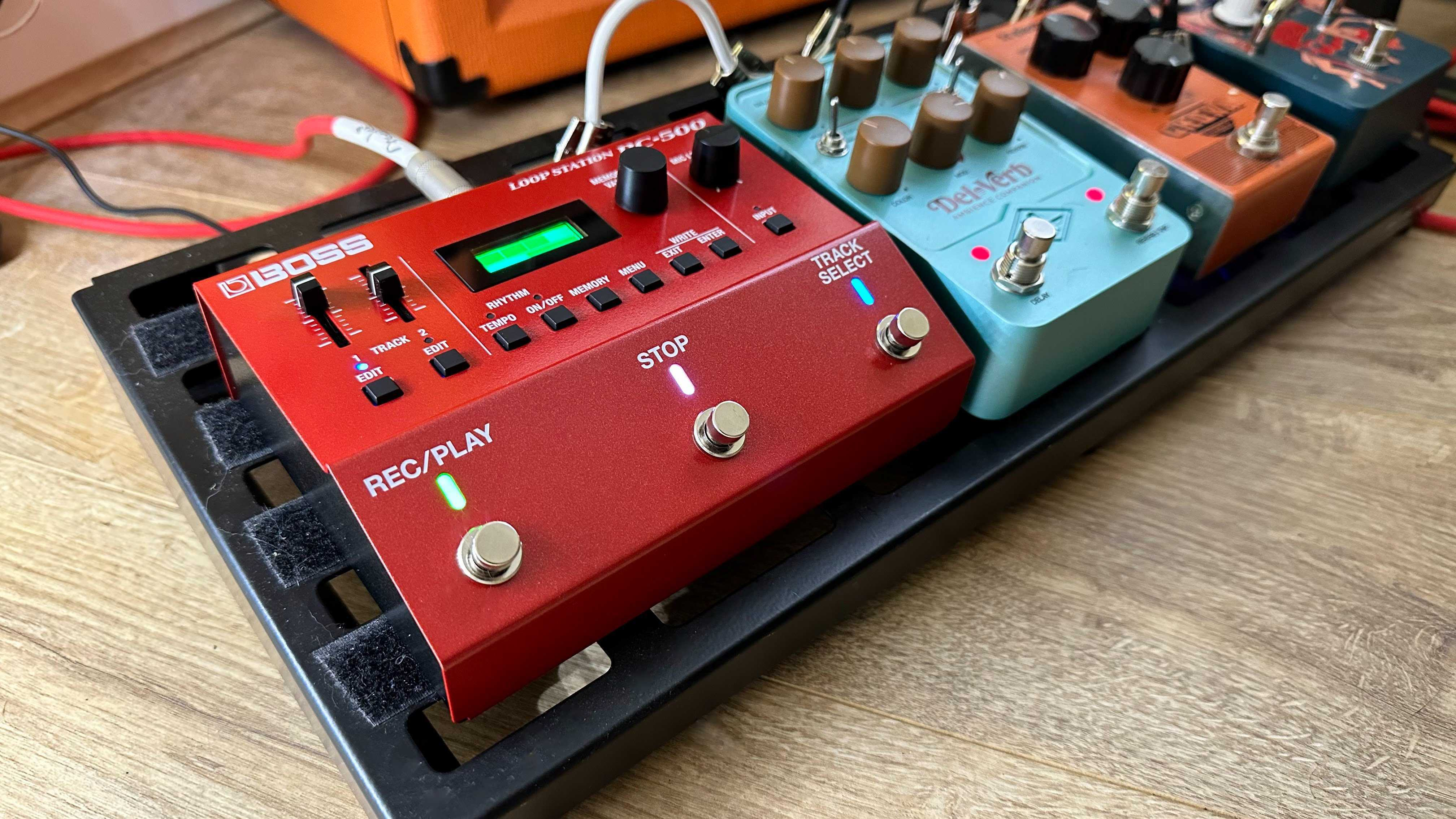
Specifications
Reasons to buy
Reasons to avoid
🔁 If you’ve already owned a looper pedal and you want something with plenty of functionality for playing live shows, the Boss RC-500 is the perfect intermediate option between compact pedals and more fully featured loop stations.
✅ Buy if
You want to augment your live performances with looping functionality.
❌ Avoid if
You’re only likely to be using a looper for writing purposes or playing at home.
Build quality: ★★★★½
Usability: ★★★★½
Sounds: ★★★★½
Overview
Packing a huge swathe of functionality beneath it red exterior, the Boss RC-500 is the perfect stepping stone for players who’ve already owned a looper and want to delve further into the functionality for live performances. While it’s as easy to get into as the RC-5, the advanced features of the RC-500 can really help you take your looping to the next level.
Build quality
Like all Boss pedals, the RC-500 is an incredibly well-built unit. Sharing the same chassis as the other 500-series pedals, despite the size, the RC-500 is actually fairly lightweight when compared to something like the Sheeran Looper+. Don’t take that for weakness though; this thing can absolutely take a beating.
The chassis feels completely rock solid, to the point you could stand your whole weight on it, and I doubt it would go anywhere. It’s a similar story for the two knobs and various buttons on the front panel, although the two sliders don’t feel quite as solid. There’s a little bit of travel in them if you jiggle them from side to side, so I could see them getting damaged over time if you’re the sort that treats your pedal particularly badly.
Performance
Like the RC-5, when I took the RC-500 out of the box, I was immediately able to start looping with it. No manual diving needed, just plug in (or use the batteries Boss handily includes) and the clearly marked footswitches guide your way around the pedal. It was a matter of minutes from unboxing it to putting together a minimalist type loop with multiple layers.
Like the RC-5, you get a small screen that works as a visual aid, showing you four bars across the top for your timing and a longer bar along the bottom to show the overall progress of the loop. The color-code system is the same too, with red for recording your initial loop, green for playback, and yellow for overdubbing. Each footswitch also has an LED that lights up to correspond with what is happening on the screen, so there are plenty of visual aids for you to use.
The third footswitch lets you select two different tracks, with the volume of each controlled by the aforementioned sliders. You can have these two tracks play simultaneously or in series if you want to set up song sections like a verse/chorus. The process of looping is exactly the same as you would do with a single loop; you just have to press the track select footswitch to start recording your second loop.
The rhythms are the same as those on the RC-5, with 57 different patterns to choose from, each with its own variation. You can add reverb to the track for a more spacious sound, but to be honest, the patterns didn’t really blow me away. I’d be happy practicing with them at home, but for me, they don’t quite have the fidelity required for a quality live performance. It’s a similar tale with the loop FX, which is a cool novelty to have, but I’m not sure I’d ever actually use them for anything other than messing around.
Having phantom power on the mic input is a really nifty feature, giving you access to recording with a larger variety of microphones. That opens up so really interesting possibilities with the RC-500 has a pseudo audio interface, letting you plug in a condenser microphone to capture all kinds of sounds for your looping exploits. Of course, you could just put a dynamic mic in the front of it for capturing live vocals too.
Summary
With its additional connectivity, microphone input, and multiple tracks, the RC-500 is ideal for stepping up from a more beginner-friendly looper to something more ‘pro’. Whether you’re a solo musician looking to beef up a live performance or part of a group that wants to add more power to your onstage arrangements, I can think of few better options than the RC-500.

“As with any pedal, the real question you should be asking is how you’re going to use it. Realistically, the RC-500 offers everything most people will need before you start getting into the realms of those hardcore loopers that look like they require an engineering doctorate to operate.”
Read more: Boss RC-500 review
Best with drums
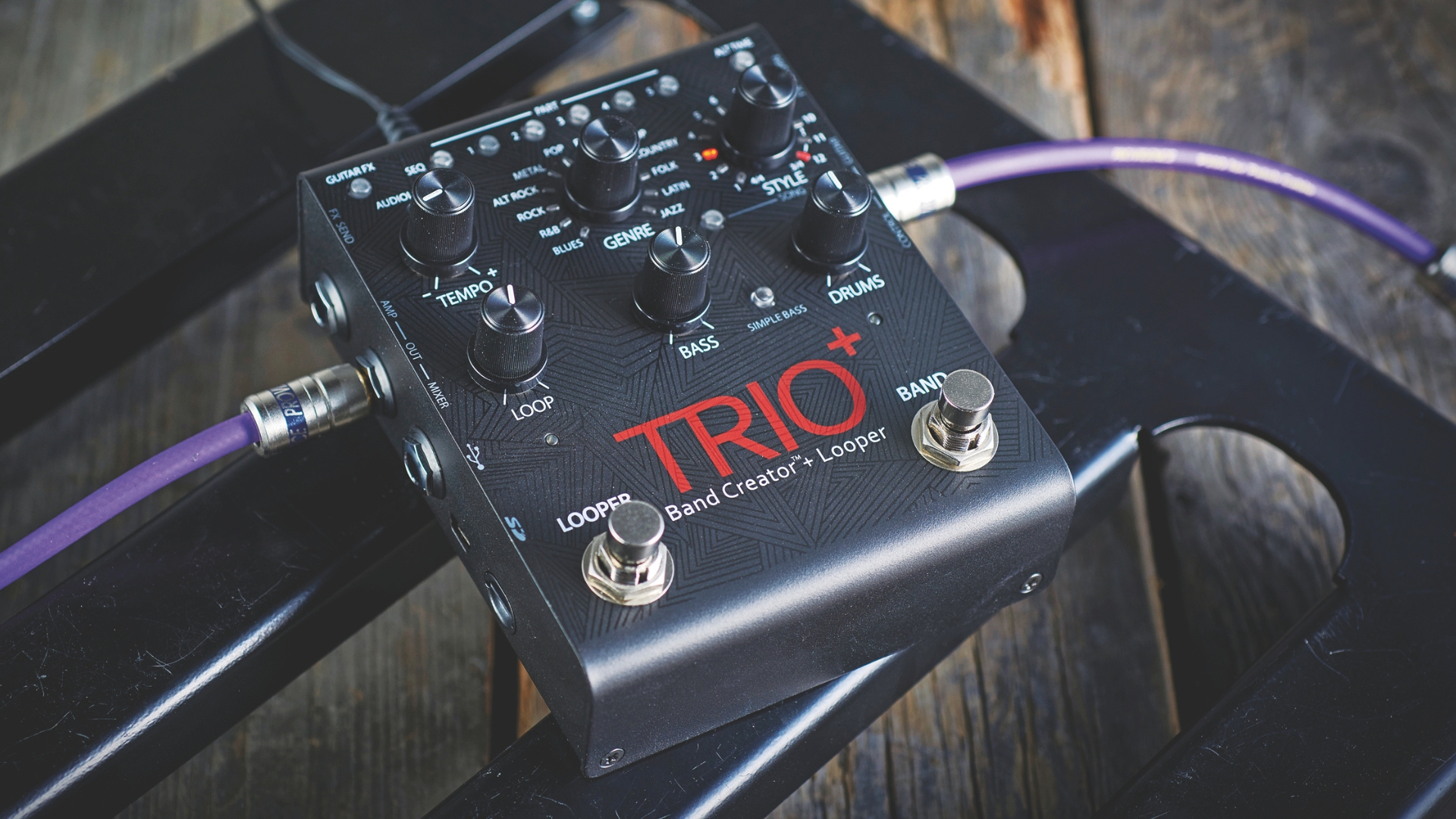
Specifications
Reasons to buy
Reasons to avoid
🔁 If you’re the sort of player who wants to jam at home or songwrite, the Digitech Trio+ is essentially a band in a pedal that can accompany you in all kinds of styles, helping improve your playing or assist you in composing new material.
✅ Buy if
You play at home by yourself and want to loop with something more exciting than stock rhythms.
❌ Avoid if
You prefer to loop freely without any accompanying rhythms or tracks.
Build quality: ★★★★½
Usability: ★★★★☆
Sounds: ★★★★☆
Overview
Representing one of the best loopers with drums I’ve ever had my hands on, the Digitech Trio+ gives you a full backing band to play along with your loops. These aren’t stock rhythms either, the Trio+ listens to your playing and reacts accordingly, giving you huge potential when it comes to crafting full songs by yourself.
Build quality
Like all Digitech pedals I’ve reviewed and owned over the years, the Trio+ is extremely well built. The slightly wedge-shaped metal chassis feels ultra robust, and the six knobs are affixed well enough that I think they’ll put up with the odd mistimed stomp, and the footswitches feel nice and solid too.
The six knobs and plethora of LED lights that double as buttons are a really cool touch, and there are a lot of labels to get your head around when you first look at it. There’s also a good number of connection options to help you take advantage of the backing band built into the pedal. Handily, it also includes an SD card for saving all of your creations.
Performance
Using the Digitech Trio+ is quite unlike many of the other pedals I’ve tested. More than just a simple looper, in order to get the best out of it you need to ‘teach’ the backing band your loop before you get to the fun stuff. So while I initially tried to just dive straight in, I quickly realised I needed the quick start guide for this particular pedal.
To do this, you need to ‘arm’ the band by pressing the band footswitch and then begin playing. Whether you want to start with an easy chord progression or a lick that’s up to you, but once you’re done, you just hit the band button again and you’ll immediately get a drum and bassline playing back at you. It definitely surprised me with how well it listens to your playing, and if you’re not happy with it, you can just change it up with the genre knob, which will instantly transform the style.
The looping portion of the pedal works the same as any other single switch looper I’ve tried, but the difference here is that you wait for the band to return to the start of the phrase. This is handily indicated by LEDs on the pedal, which flash red before lighting up orange to indicate you’re ready to record. You can loop endlessly over the top of your initial progression, making them as complex as you like.
Once you’re happy with your loop, you can then use the parts LED/buttons at the top to add more, creating a full song with key changes, bridges, solo sections, whatever you like. You can play back any of these modes at any time by pressing the individual part buttons, as well as playing back the whole thing by using the sequence button. You can also adjust the intensity of the backing band during each part to highlight the differences between the sections.
It’s an incredibly powerful tool for songwriting, and apart from some complications using more esoteric time signatures, it handled pretty much everything I threw at it with ease. My one major criticism of the pedal is that the actual audio quality of the backing band isn’t good enough where I’d want to use it live. It’s fine for messing around with at home, but I’m not sure I’d want to use it in a live scenario.
Summary
If you’re only playing at home and want some accompaniment, then for me the Digitech Trio+ is the perfect choice. It’s an incredible songwriting tool if you want to compose but don’t have a band, and acts as a great practice tool for honing your rhythm chops and finely tuning your ear. The audio quality won’t suit live players, but for songwriting practice at home, no other looper does it better.

“Once my admittedly ‘stock’ sounding G-C-D song was out of the way, I tried something a little more esoteric, with a darker song that shifted from D to D# in 6/4, over which I played some double harmonic scales for that Eastern-inspired sound. I have to admit that the Trio+ coped with it extremely well, providing me with a perfect backing once I’d tweaked the style a bit and taken things down to a half-time feel. It genuinely gave me a bunch of ideas for a new song to take into the practice room that matched the exotic sound of my current band impressively well.”
Read more: Digitech Trio+ review
Best multi-track looper
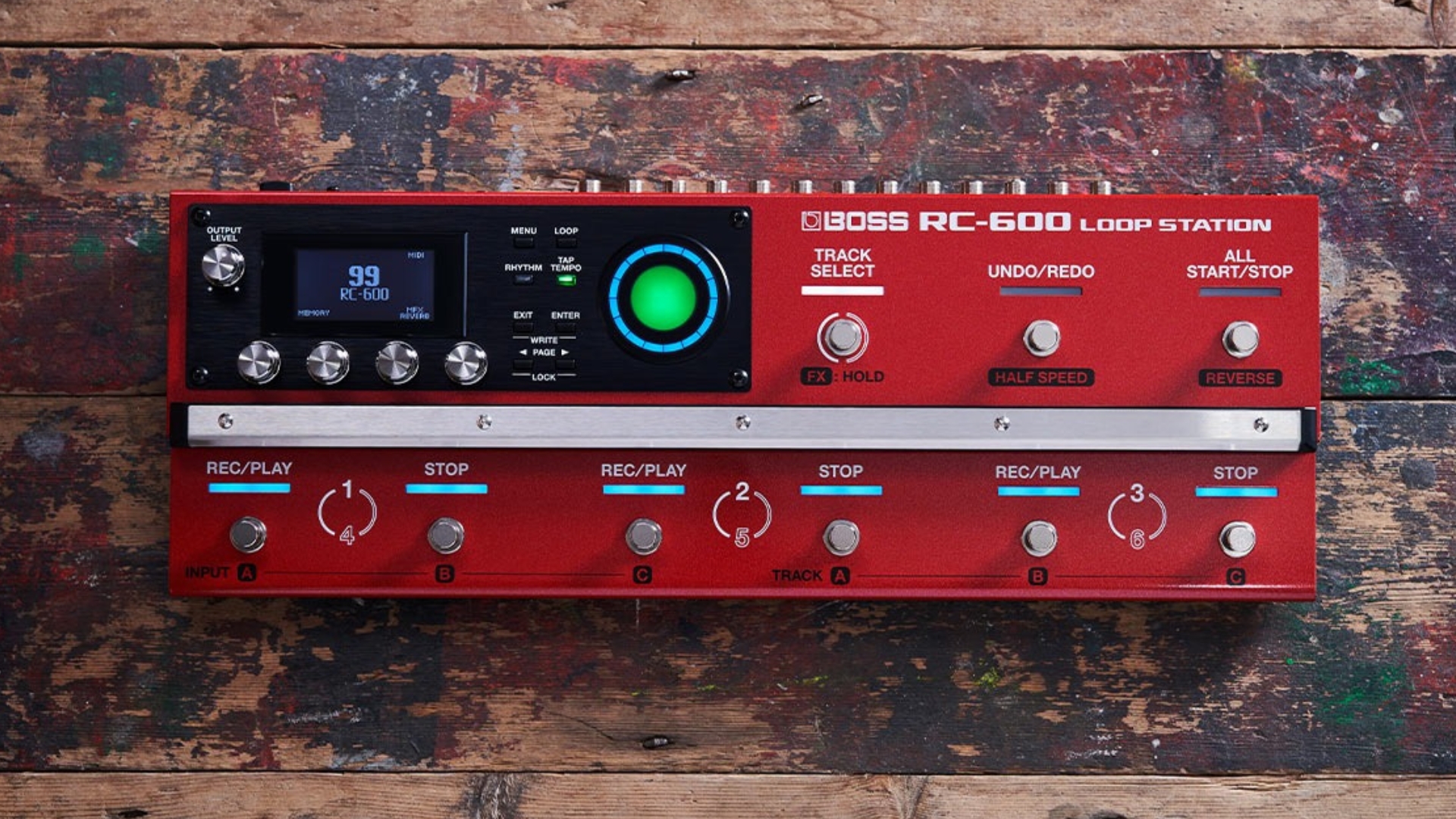
6. Boss RC-600
Our expert review:
Specifications
Reasons to buy
Reasons to avoid
🔁 Jam-packed with connectivity and six stereo tracks of looping, this looper is for professionals who want ultimate flexibility and connectivity for performing and composing with multiple tracks.
✅ Buy if
You want an all-powerful loop station for composing and performing complex arrangements with multiple instruments.
❌ Avoid if
You want a looper purely for practicing and writing music at home.
Build quality: ★★★★½
Usability: ★★★★☆
Sounds: ★★★★½
Overview
Looking more like a multi-effects pedal or gig-worthy pedal switcher than a looper pedal, the Boss RC-600 is the ultimate looper for those who want to play with multiple tracks and instruments. Not for beginners, the RC-600 is the sort of looper you’ll find gigging professionals using, offering a huge array of connectivity and functionality.
Build quality
The RC-600 is big, but still surprised me with how heavy for its size. The all-metal chassis no doubt adds to the weight, and the two-tier design is separated by a metal strip that appears to be designed to reinforce the area where you stomp and prevent damage. It’s a pedal designed for gigging, so it’s no surprise to find it feeling extremely robust.
It’s got loads of visual aids with both a screen and circular, segmented light that flashes in the middle to show your tempo. The color coding system is much like any other boss looper with red for first-time recording, yellow for overdubs, and green for playback. Each footswitch has its own light too, so the possibility of you getting lost on stage with this thing is pretty low.
Performance
Although I was a little daunted when I first plugged in the RC-600, I was really quite surprised by how easy it is to actually use. Having used a couple of other Boss loopers before hand, I was already familiar with how they work, and despite the huge amount of options, the RC-600 is no more difficult to get to grips with than the RC-5.
Even without looking at the manual, I was able to start getting my multi-track looping in order, building around a hypnotic motif in a diminished scale. Each of the six tracks has a play/record button and a stop button, which combined with the master undo button on the top tier, makes it easy to start building vastly complex arrangements.
You can use a click if you like, which can be routed to an external output so you don’t hear it in the master out, which makes building the arrangements much simpler and better sounding. While playing live with monitoring, you can ensure everything is in time without your audience hearing that you’ve got an assistant in your ear to help you.
All of the six tracks can be stopped at any point, but you do have to make sure all your loops are the same length; otherwise, the overall loop time will be shortened or lengthened depending on when you stop looping. The track select button lets you switch between tracks 1-3 and 4-6, with the color changing from white to red to indicate whether you’re in the higher or lower portion.
You get a lot of FX with the RC-600 too, including everything from standard Boss pedal fare like flanger and overdrive through to more out there effects like a synthesizer, radio, and even a robot sound. You can apply the effects to your input signal but even better, apply them to your already recorded loops.
This makes for enormous flexibility in how you craft your overall compositions, and just awesome fun taking clean guitar loops and enhancing them in a variety of ways. It’s admittedly a little fiddly at first with all the menu diving, but it didn’t take me too long to get my head around it and start really crafting my sounds.
Although I only used it for guitar recordings, the pure flexibility on offer here with the multiple inputs means it’s not hard to imagine the sheer scale of possibility with this pedal. Were you to add vocals or an additional acoustic instrument that’s been miked up, or just a different guitar or bass guitar, there’s a huge wealth of potential.
There are a couple of things I wasn’t a fan of, though, and the main one is the small footswitches. Having used the pedal for some time, I can see why Boss reinforced the shelf area with additional metal. The tiered nature of the pedal's design makes it quite hard to hit the footswitches without some practice, and doubly so if you’re not wearing shoes. While the soft click footswitches are all the rage at the moment, for this sort of pedal where timing is key, I’d prefer a larger footswitch to stomp on with a bit more tactile feedback.
Secondly - and this is a complaint I have with pretty much all looper pedals with rhythms - they’re just not that great quality. I’d be happy practicing with them, but using them in a live capacity would be a no from me. I’d much rather load my own sampled drum loop into the pedal, which I’d imagine most people would do anyway if they wanted rhythms to back them while playing live.
Summary
Out of all the pedals I tried, the RC-600 ended up being my personal favorite. It’s a playhouse for solo songwriters, incredibly powerful with endless potential for sound sculpting and creativity. But I’ll admit it is probably overkill for the vast majority of guitarists who just want simple looping. If you want to spend hours on end fiddling with loops and tweaking settings, or you’re looking to really step up a live performance, the RC-600 is my top choice if you want powerful multi-track looping.
Spec comparison
If you're struggling to decide between my top picks, I've put together this table of key specs that will help you make a direct comparison between each looper.
Model | Loop time | Rhythms | Effects | Inputs | Outputs | MIDI | Bypass | Footswitches |
|---|---|---|---|---|---|---|---|---|
Boss RC-5 | 90 mins | 57 | 1 | 2 | 2 | Yes | Buffered | 1 |
TC Ditto 2 | 10 mins | 0 | 0 | 1 | 1 | No | Selectable | 1 |
Sheeran Looper + | 90 mins | 0 | 2 | 3 | 2 | Yes | True bypass | 2 |
Boss RC-500 | 90 mins | 57 | 3 | 2 | 2 | Yes | Buffered | 3 |
Digitech Trio+ | 230 secs | 12 | 0 | 2 | 3 | No | Buffered | 2 |
Boss RC-600 | 90 mins | 200 | 53 | 6 | 6 | Yes | Buffered | 9 |
Also consider
For me, the loopers above should cover the vast majority of looping needs. That said, I appreciate no two guitarists are alike, so if you didn't find what you wanted above, here are some more loop pedals reviewed by the Guitar World team.
Boss RC-1 Loop Station
1 footswitch | Buffered bypass | No stop button
Yes, another Boss pedal, but the Japanese effects giant really does have it down when it comes to making the best looper pedals. The RC-1 is its entry-level looper, so it’s super-easy to use and would perfectly suit someone just starting out with looping. The single footswitch controls all your stop/starting and overdubs, while the knob above lets you set your loop level. There’s also a really handy LED circle that shows you whereabouts in the cycle your loop is.
★★★★★
Read more: Boss RC-1 Loop Station review
Singular Sound Aeros Loop Studio
4 footswitches | Buffered bypass | Dedicated stop button
One of the most advanced looper pedals you can get your hands on, the Aeros is so packed with features, it blurs the line between looper and DAW. Chief among its feature set is a 4.3” touchscreen, as well as Wi-Fi and Bluetooth connectivity, expression pedal support, and SD card compatibility. Perhaps most impressive is the ability to create a ridonkulous 36 loops per song – with unlimited overdubs per loop – making this a solo loop performer’s dream.
★★★★★
Read more: Singular Sound Aeros Loop Studio review
TC Electronic Ditto X2
2 footswitches | True bypass | Dedicated stop button
The TC Electronic Ditto X2 is still incredibly popular as an entry-level looper pedal, and the truism with groceries applies to TC's looper line: if you go one above the cheapest, you get the best value. So it goes with the Ditto X2. Incredibly simple on the front panel, there's a single control for the loop volume, then it's one tap to record, one to play, and there's a dedicated stop button.
★★★★½
Read more: TC Electronic Ditto X2 review
Pigtronix Infinity 3 Looper
3 footswitches | Buffered bypass | Dedicated stop button
Though two loops might not sound like much at this price, with the Pigtronix Infinity 3 Looper, you can add up to 256 overdubs per loop, and the two loops can be synced as well. That synchronization is not only the basic kind, that is to say, the two loops playing for the same length of time, but also making one multiple of the other. In addition to parallel operation, the loops can be set to series: the one starting after the other for more streamlined transitions between sections in a song.
★★★★½
Read more: Pigtronix Infinity 3 Looper review
Boss RC-10R Rhythm Loop Station
2 footswitches | Buffered bypass | No stop button
The latest in Boss’s Loop Station collection earns the ‘R’ suffix due to its built-in rhythm generator, making it almost like a looper/drum machine hybrid. Onboard, you’ll find 280 preset rhythms covering a host of musical genres, and each includes two unique sections (Pattern 1 and Pattern 2) with transition fills and an intro and ending. There’s also storage for 50 imported user rhythms.
★★★★½
Read more: Boss RC-10R Rhythm Loop Station review
TC Electronic Ditto+
1 footswitch | Buffered bypass | No stop button
The simple-but-effective TC Electronic Ditto was a pedalboard staple, both for live use and for writing at home or in a practice room. Although it lacked a dedicated stop control, halting a loop was relatively foolproof, and crucially, the pedal's form factor was small. It was also a brilliant, cheap looper pedal, so this meant that one or more could be snuck onto even the tightest of 'boards.
★★★★½
Read more: TC Electronic Ditto+ review
Line 6 DL4 MK2
4 footswitches | Buffered, true, or DSP bypass | Dedicated stop button
Although primarily a delay pedal, the DL4 has carved a cult space as a great looper pedal in its own right. This new version of the groundbreaking DL4 has been given a facelift, and it now performs even better as a looper. It’s got an increased 240-second loop time (or 120 seconds in stereo) and offers players the option of either using all four footswitches or a more simplified one-button loop mode.
★★★★½
Read more: Line 6 DL4 MK2 review
Electro-Harmonix 720 Stereo Looper Pedal
2 footswitches | Buffered bypass | Dedicated stop button
The Electro-Harmonix 720 is named for the 720 seconds (12 minutes) of loops that it can store across 10 dedicated loops. Although scrolling between these on the fly live is definitely in the 'flying by the seat of your pants' camp, you can attach an external three-button footswitch to access the undo/redo functionality and the bank up/down controls.
★★★★☆
MXR M303 Clone Looper
2 footswitches | True or buffered bypass | Dedicated stop button
The MXR looper crams a lot of functionality into a relatively compact pedal. With six minutes’ loop time and unlimited overdubs, you’ve got a pretty big blank canvas to play with. It’s also worth noting the very high sound quality produced by this unit – 88.2kHz operation means that you’ll get little to no perceivable sound degradation, so your precious tone stays intact.
★★★★☆
Read more: MXR M303 Clone Looper review
How to choose
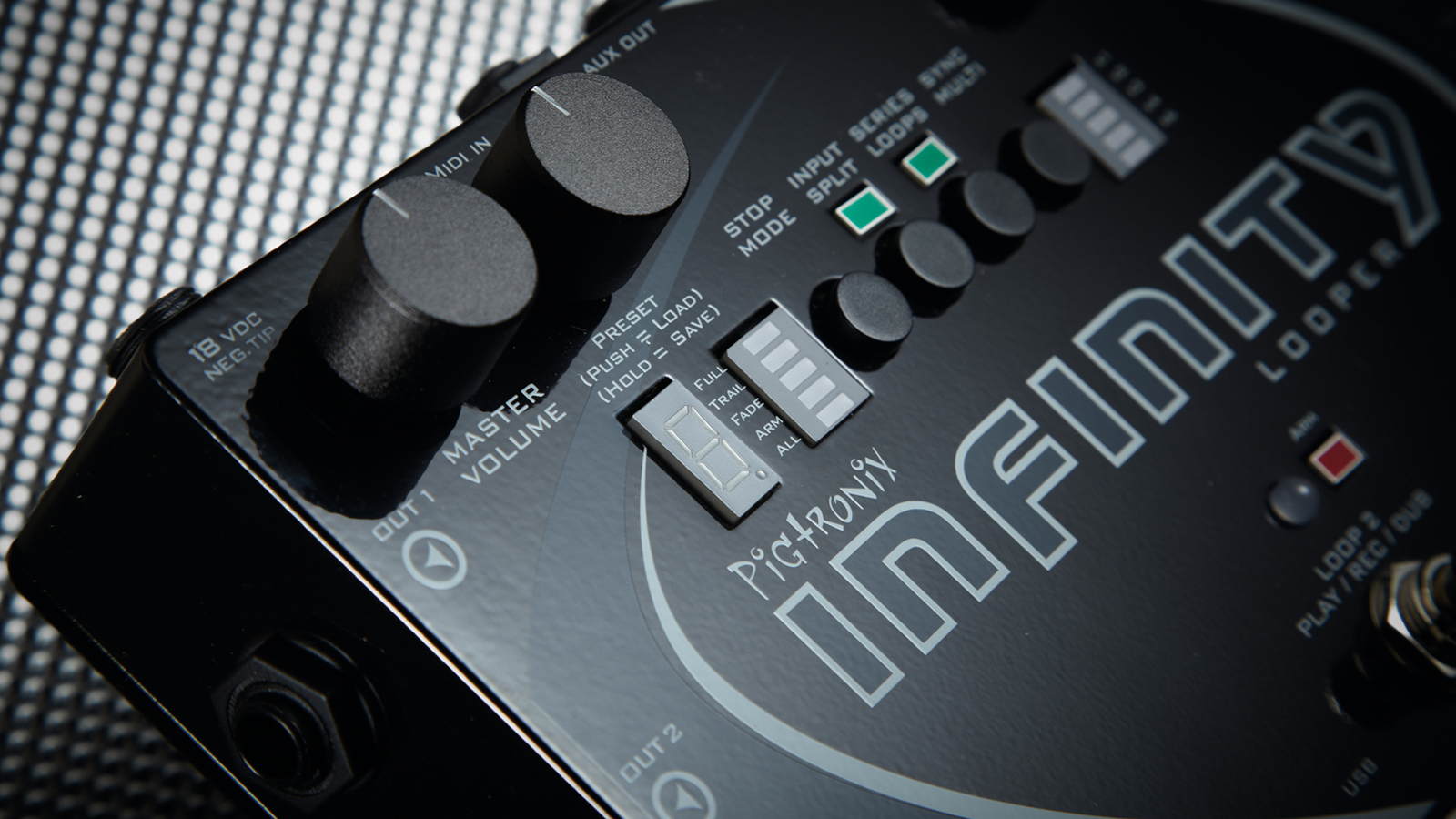
When picking at a looper pedal you’ll need to take a few things into account. Loopers can have a couple of different uses, with most players either wanting something to practice and write at home with, or the other half who require them for live use. If you’re buying for the first time, then here’s what you should be looking out for:
1. Use case
The key thing you need to determine is what you’re going to be using the looper for. Some loopers offer a single footswitch that makes them great for practicing at home, but that probably won’t cut it if you’re aiming to perform live. A one-button looper is a great idea for songwriting and simple use, but look to more complex loopers with a dedicated stop button if you want to play live.
2. Size
Some loopers are absolutely tiny, whereas other, more complex loopers can be pretty hefty beasts. Ensuring you have a looper that fits well onto your pedalboard is a really important part of making sure you make a correct buying decision. Loopers like the TC Electronic Ditto will fit on pretty much any ‘board, but something like the Boss RC-600 is essentially a full pedalboard in itself.
3. Loop time
Different loopers have varying amounts of loop time, and some even come with SD card slots to expand it further. Again, this will come down to your use case. You might want a lot of loop time because you’ll be writing entire songs with your looper, or performing longer loops when playing live. You might also prefer to go the minimalist route and build up lots of short loops. Whichever it is, it’s wise to check out how much looping time any looper offers before buying.
4. Overdubs & undo/redo
If you’re going to be playing live then for me, this is a key feature to have. The ability to layer multiple loops without a drop in quality exists for most modern loopers, but not every looper has the ability to undo your most recent loops. This can be a godsend if you mess something up, or if you just want the ability to revert back to where you were as part of the performance.
5. Backing tracks
Some loopers come with backing tracks which can really enhance your practice and performances. If you’re looking to write music at home or practice your timing a drum loop can be really useful, and similarly, if you play live as a solo musician the ability to use backing tracks can take your live show to another level.
How to use a looper
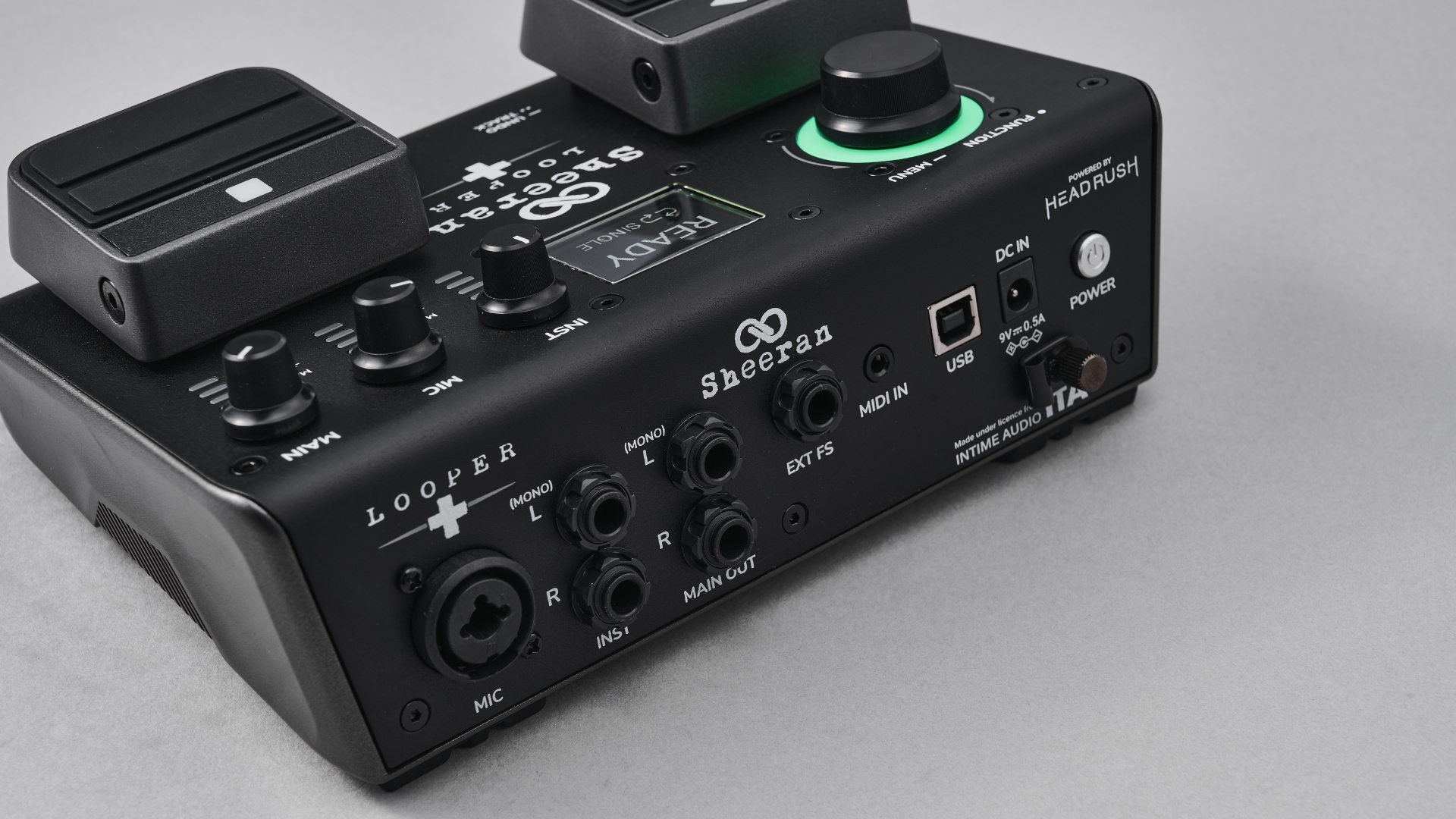
If you’re looking to work out how to actually use your looper pedal once you get it, here’s my step-by-step guide to mastering looping.
1. Record your loop
First of all, you’ll need to step on your loop pedal to engage it. Depending on what you’re recording, you might want to count yourself in or play the riff/lick a few times before you hit record to get a feel for the rhythm. A good sense of rhythm is key to making good-sounding loops, so you may need to try a few times to really nail it.
2. Stop the loop
Once you’ve played the full iteration of your loop, you’ll need to hit the looper again, likely using the same button you used to start recording, to ‘close’ the loop off. Your looper should then automatically begin playing back your loop.
3. Layer your loops
You could leave it there if you’re looking at working on some lead guitar work or trying out different harmonies. But nearly every looper will allow you to add more layers, which is where you can get really creative. You could try creating percussive loops by tapping or bashing different parts of your guitar, harmonizing existing parts, adding different chord inversions, or just playing entirely new parts within the same key.
How we test
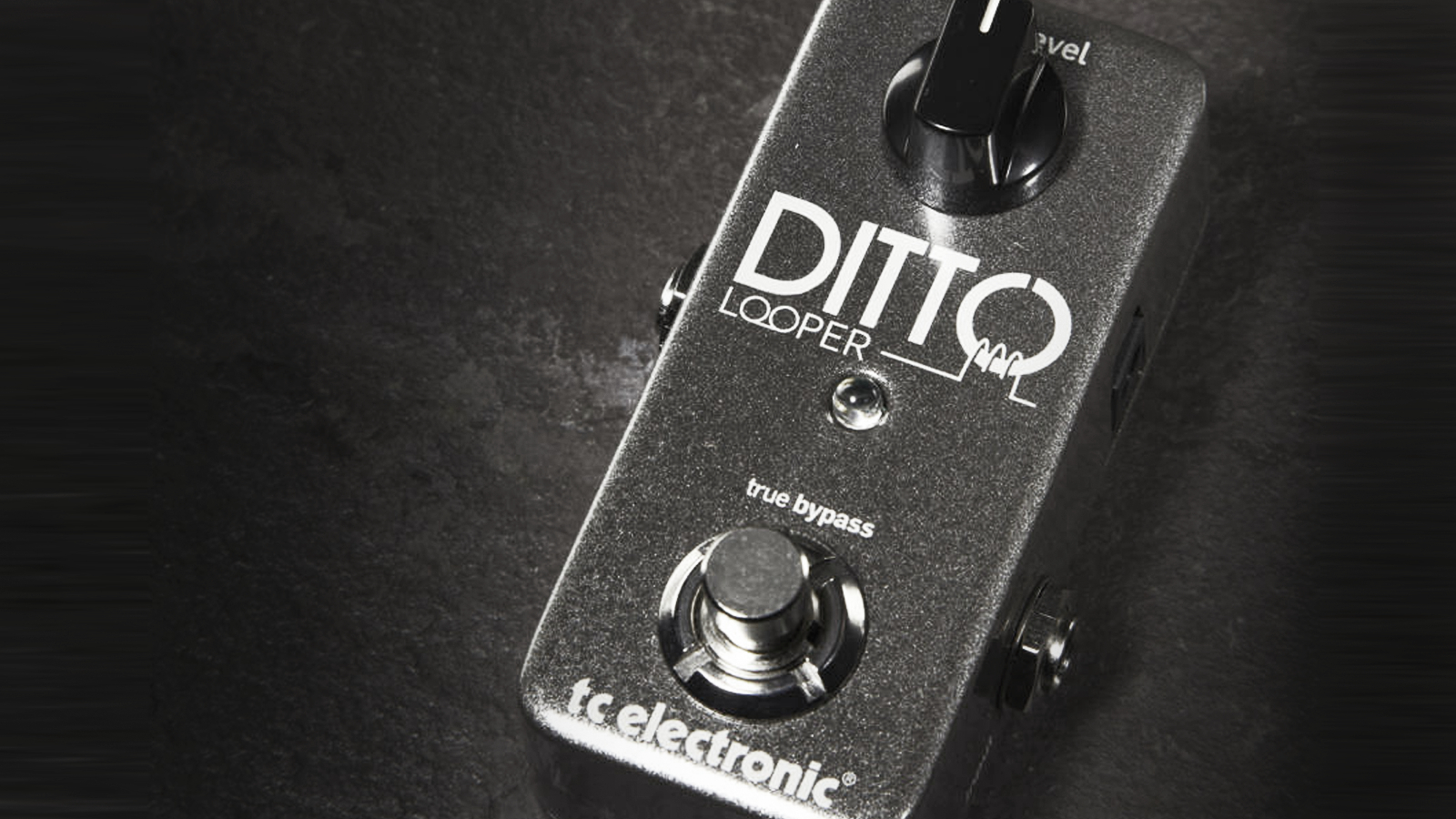
To put together this guide, I got my hands on every single one of my top picks to put them through their paces side by side. This methodology allowed me to really determine which are the best loopers, alongside the many other looper pedals I’ve tested and used over my plus twenty years of playing guitar.
I lived with all of the top six loopers for well over two weeks, which allowed me to get past that initial honeymoon phase of getting new gear and really determine how suitable they are for various use cases. Doing this is what informed the categories I set out, as certain loopers performed better than others for different tasks.
With each looper I conducted a review-like process to really get my head around how they operate. This involves looking at the following aspects:
1. Build quality
Loopers tend to get stomped on a lot, so I made it my first mission to determine how robustly they were built. This began with a physical inspection of every inch of the pedal to look for any signs of poor craftsmanship. I’ll twizzle all the knobs, use any footswitches, push buttons, and pry and prod at every component of the pedal until I’m happy that there isn’t anything that feels like it will fail.
The build quality test also runs throughout, as putting the pedal into actual use is a good test of its durability. For that reason, I’ll take them to the rehearsal room to play with my band, into the studio if I’m recording, and occasionally use them at gigs to be sure they really are built to last.
2. Usability
This is a big test for looper pedals. For me, a good looper pedal should be usable without having to resort to the manual. Granted, some more complex functions are likely to be hidden in menus, but the actual looping part should be instantly accessible. In my testin,g I’ll take the pedal out of its box, plug it in, and attempt to loop straight away, making note of anything that gets in the way of me using it.
Once I’ve got my head around the basics, I’ll then start diving deeper into the pedal’s functionality, getting the manual out to see what its capabilities are. This also informs the testing as even complex features should be usable once you know where to find them, and that’s the mark of a truly great looper pedal.
3. Sound
Sound is a pretty subjective thing, but there’s one key sound quality that all good looper pedals need, and that’s the ability to sound clear and articulate even with multiple overdubs. I’m not expecting miracles, as the arrangement is a big part of getting multiple loops right, but you should be able to nail down at least 5 different parts and still be able to hear everything on any decent looper.
I’ll also look at the sound of any built-in rhythms, as I’ve noticed looper pedals can really fall down here. I’ll check out any additional patterns, kits, and other effects that can be added into the mix, playing along with the rhythms to see how they feel and sound next to my own loops.
Some loopers have built-in FX, so I’ll also try these out in this phase. Mostly these are things like half speed or reversing of loops, but others do have other effects built in like reverbs, delays, and more. Using my many years of experience reviewing gear, I’ll determine whether these are genuinely usable, or just gimmicky effects thrown in for the sake of it.
Key terms
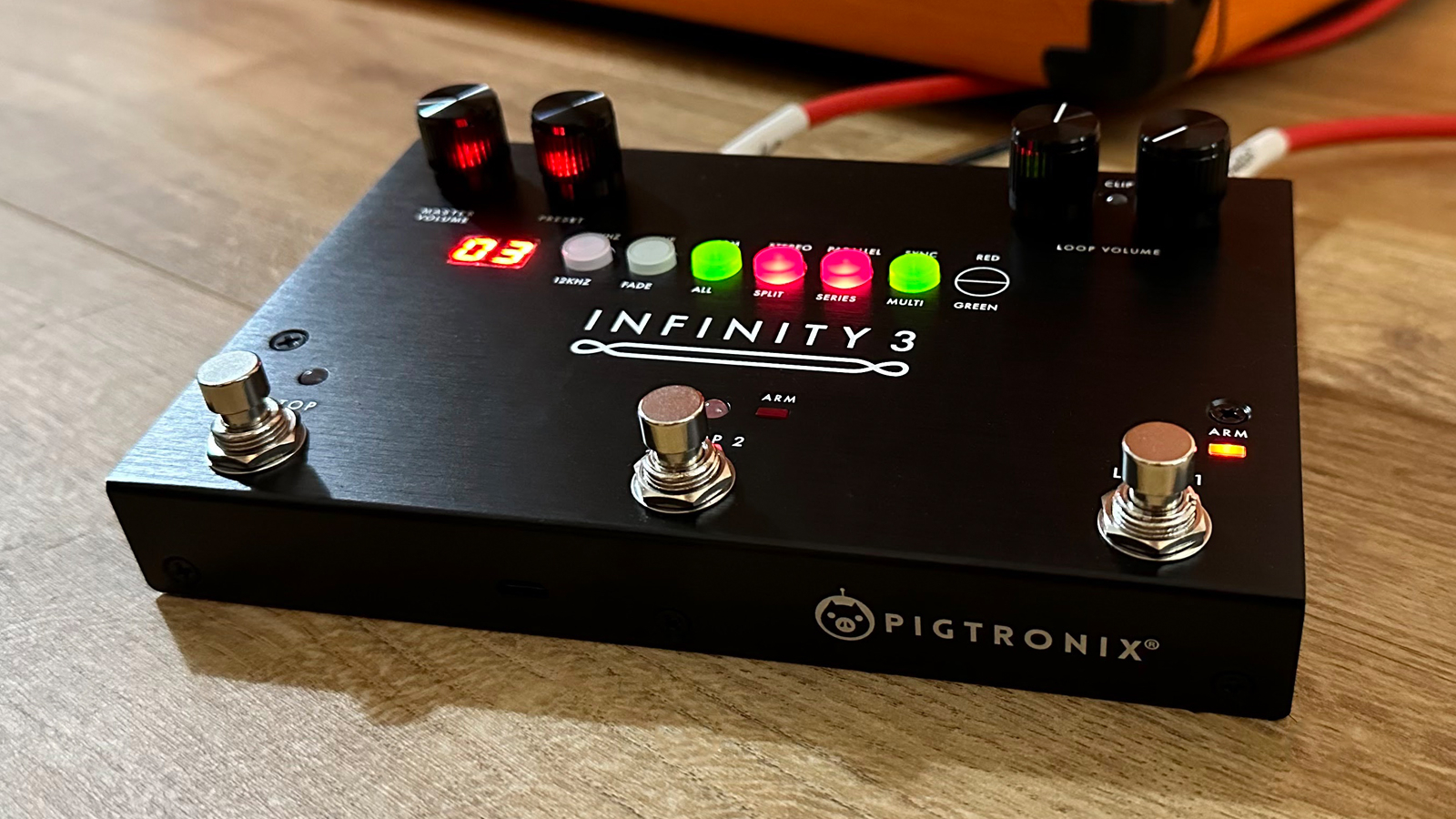
If you’re confused about any of the looper-specific lingo used in this guide, then this is the place that will unlock some extra knowledge for you. Looping uses a lot of different techniques from other parts of the musical spectrum, so it’s good to get to grips with the terms to help you understand the category better.
- AD/DA (Audio-Digital/Digital-Audio): The conversion process of changing your guitar’s analog signal into a digital one for looping.
- Backing track: A pre-recorded track to play along to.
- Bit depth: The dynamic range of your loops, with most looper pedals operating in 24-bit.
- Buffered bypass: Adds a boost to the signal chain to keep your tone intact in complex setups.
- Dry signal: Your unaffected guitar tone.
- DSP (Digital Signal Processing): A chip in a looper pedal that handles all the real-time audio processing.
- FX Loop: A way of inserting pedals between the preamp and power amp sections of your guitar amplifier. Allows for cleaner use of certain effects.
- Loop: A loop is a single phrase of guitar playing that plays over and over until you stop it.
- MIDI: MIDI allows you to synchronize your loops with other gear, whether that’s a laptop or another kind of guitar pedal.
- Quantize: A way of automatically aligning the rhythm of your loops so everything you play is perfectly in time.
- Reverse: Automatically plays your loop in reverse, a feature available on certain looper pedals.
- Sample rate: The number of ‘snapshots’ of audio taken per second, of which a higher rate means a more detailed sound. Most loopers operate at 44.1kHz, but some do 48kHz.
- True bypass: A pedal type that allows your signal to pass through without any additional boost or coloration.
Why trust us
☑️ A global audience of 3.8 million guitarists monthly
☑️ 1,200+ reviews on GuitarWorld.com
☑️ 30+ years of product testing at Guitar World
Guitar World boasts over 44 years of expertise and stands as the ultimate authority on all things related to guitars. The magazine and website feature expertly written gear round-ups and top-quality, authoritative reviews penned by a team of highly experienced industry professionals.
Guitar World's inaugural print issue hit the shelves in July 1980, and ever since, it has been captivating players and enthusiasts with engaging lessons, insightful interviews with the biggest guitar heroes, and priceless buying advice for newbie players.
Furthermore, GuitarWorld.com continues this legacy online and serves as the hub of the world's foremost authorities on guitar playing. The site not only hosts content from Guitar World but also showcases articles from respected publications such as Guitarist, Total Guitar, Guitar Techniques, and Bass Player. With a reach extending to 3.8 million players each month, GuitarWorld.com is a go-to destination for guitar fanatics globally.
Meet the experts
Our writing team are all real-life musicians who live and breathe guitar and guitar gear. We’ve got a huge amount of collective experience reviewing and testing gear. Here’s some more info on the team:

Matt is a Junior Deals Writer here at Guitar World. He regularly tests and reviews music gear with a focus on guitars, amps, pedals, modelers, and pretty much anything else guitar-related. Responsible for over 60 buying guides, a large part of his role is helping guitarists find the best deals on gear. Matt worked in music retail for 5 years at Dawsons Music and Northwest Guitars and has written for various music sites including MusicRadar, Guitar Player, Guitar.com, Ultimate Guitar, and Thomann’s t.blog.

Rob has 20 years of experience writing, reviewing and editing for guitar magazines and websites, including Guitarist and Total Guitar. He's now the Reviews Editor for GuitarWorld.com and MusicRadar guitars, heading up our in-house reviews team to give you in-depth and honest tests of the latest guitar gear. He eats and dreams reviews.

Chris was Editor of Total Guitar magazine from 2020 until its closure in 2024, when he became Lesson Editor for Guitar World, MusicRadar and Guitar Player. Prior to taking over as Editor, he helmed Total Guitar's world-class tab and tuition section for 12 years, helping thousands of guitarists learn how to play the instrument. A former guitar teacher, Chris trained at the Academy of Contemporary Music (ACM) in Guildford, UK, and held a degree in Philosophy & Popular Music. During his career, Chris interviewed guitar legends including Brian May and Jimmy Page, while championing new artists such as Yungblud and Nova Twins. Chris was diagnosed with Stage 4 cancer in April 2024 and died in May 2025.

Chris Corfield is a journalist with over 12 years of experience writing for some of the music world's biggest brands including Orange Amplification, MusicRadar, Guitar World, Total Guitar and Dawsons Music. Chris loves getting nerdy about everything from guitar gear and synths, to microphones and music production hardware.
FAQs
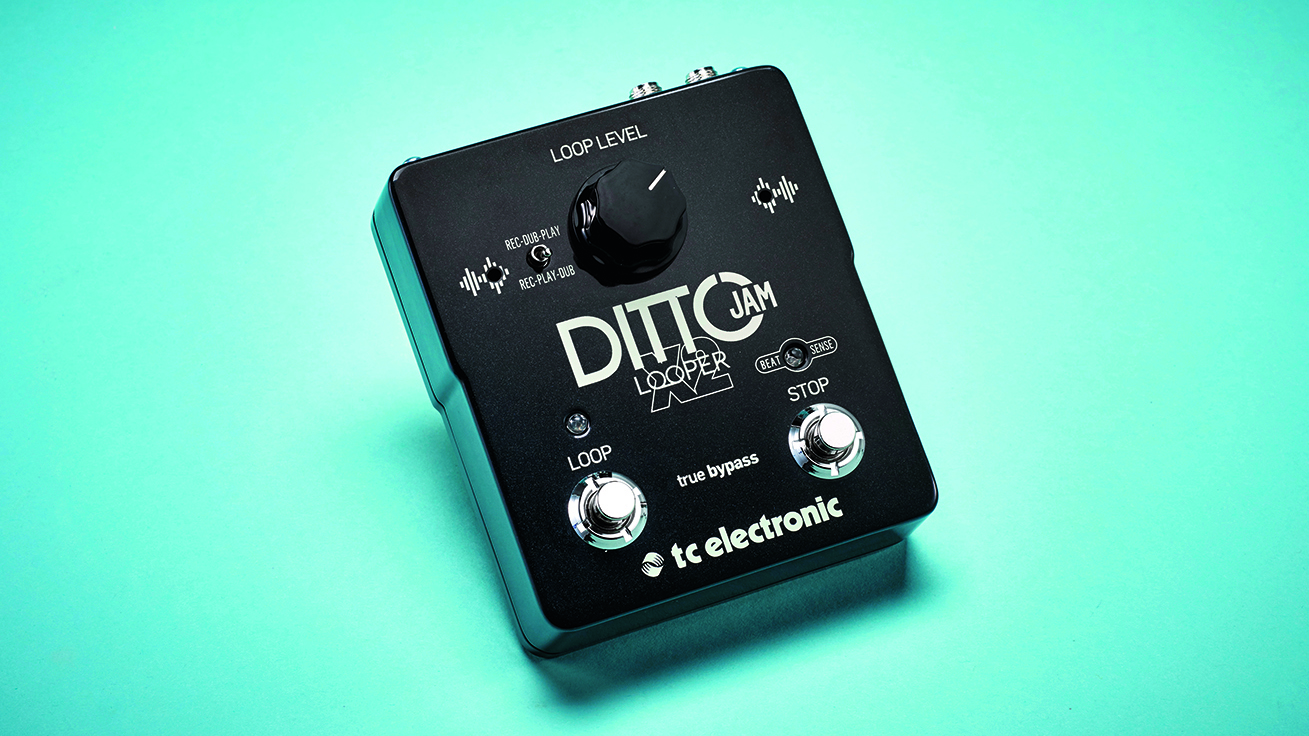
How does a looper pedal work?
Looper pedals record a chunk, or 'buffer' of audio, that can be played back on demand and over and over again. They were originally developed as an additional function of digital delay units. If you don't decrease the volume of digital delay repeats, you have a rudimentary looper. Most loop pedals come in single or double-footswitch form factors, where one switch controls capture and playback, and the other stops playback. Many also offer additional effect modes.
What can a looper pedal do?
Looper pedals are generally used for one of three things:
Songwriting: While working up an idea, it pays to be able to record it and be able to hear it back. Sometimes that's just to realise the riff wasn't as good as you initially thought, and other times it's to catch a wave of inspiration and come up with additional parts, such as solos, melodies or harmonies. Whether working at home or with others, having a loop pedal around during songwriting sessions can be invaluable. Some loopers have the ability to save a loop and export it later – a function that can be incredibly useful if you use your looper as a songwriting aid.
Jamming: Not every riff has to be a song, and if you're just jamming some tunes at the end of a long day, a looper can allow you to lay down a rhythm part to play over. In the practice space, even if it's only playing some blues licks, it's fun to have a way to set some chords up as a vamp to get a mood going, and it will really up your improvisation skills.
Live: Some players, particularly in bands with only one guitarist, use occasional live looping to free up space to play lead parts or counter-melodies. Some advanced users even play one-person band shows. They build up entire tracks from just stacked loops, with multiple instruments. For live use where you're stacking multiple loops and playing with a drummer, you may need advanced features. For example, units that can be synced with one another, or a MIDI clock, as well as those that have quantization. If you're playing in non-standard time signatures or changing tempo within songs, then the opposite is true. You'll want a non-quantized pedal where you can freely control the loop length.
Where should a looper be on a pedalboard?
Many players add a looper onto their pedalboard to capture all the different effects being added. As with any pedal, we’d recommend playing around with the order and seeing what works for you. A lot of players tend to put their looper at the end of their signal chain – that way, all the effects engaged before it will contribute to the sound source that’s being looped. Of course, if there’s a pedal you don’t want to be looped (like delay or reverb), then you could put your looper before that.
Many loopers feature stereo inputs and outputs, too, giving you more options when it comes to fitting it into your rig. You can also try experimenting with the effects loop of an amp. This is especially important if you're using your amp's own overdrive channel – if you run the looper before any overdrive or distortion, your layers will quickly turn to mush. There are loads of options, so always experiment to find out what works best for your needs.
How to connect a looper pedal to an amp?
There are a couple of ways to connect a looper pedal to a guitar amp, and for the most part your signal chain should go something like this:
Guitar > Drive pedals > Modulation pedals > Delay/reverb pedals > Loop pedal > Amp
For most guitarists, this will offer the best way of using a looper pedal, allowing you to record phrases with different combinations of effects without those effects then being applied to the previous loop when you record your next one.
You can also connect it to the FX loop of your guitar amp if you have one. You might do this if you use the distortion channel of your amplifier instead of pedals, or you’re already using your effects loop for your time-based and modulation stompboxes.
Why do my loops sound out of time?
This is because your start and end presses need to fall at the exact correct moment. It's part of what makes looping so difficult to master, and one of the only real ways to overcome this is by repetition. I often find playing what I want to loop a few times over before hitting the loop start can help, as you find a natural rhythm for your part that way. Even I mess it up sometimes though, and I've been playing for well over twenty years!
How much loop time do I really need?
It all depends on your use case. If you're a beginner, you're probably not going to need all that much. For those who want to arrange complex pieces with their looper, you might want a little more. That said, even the cheapest looper in this guide, the TC Electronic Ditto 2, features ten minutes of loop time, so it's only if you're recording whole prog rock epics that you're likely to ever run out.
Can I sync a looper to a drum machine?
Yes you can, provided your chosen looper as MIDI connectivity. MIDI should allow you to connect with a variety of music gear, locking in tempos so that everything stays nicely in time.
Are looper pedals reliable for live playing?
Yes they are. If anything is going to mess with up any decent looper, it'll be you missing your timing rather than the looper itself causing any issue. That said, some loopers are definitely built better for live use, with things like a dedicated stop button being a must-have for live playing.
Can I use a looper with vocals and other instruments?
Yes you can. Some looper pedals in this guide actually come with dedicated microphone inputs and phantom power so you can record and loop vocals. With other instruments, its typically fine to plug a synthesizer or other line level source straight into the inputs of the looper in question.
Latest updates
18/11/25: The 'my top picks' section at the top of the guide has been increased from 3 to 6 to aid user navigation. The FAQs have been expanded with more questions added to further explore the subject of looper pedals. Images now have captions to describe the section they head up.
All the latest guitar news, interviews, lessons, reviews, deals and more, direct to your inbox!

Matt is a Junior Deals Writer here at Guitar World. He regularly tests and reviews music gear with a focus on guitars, amps, pedals, modelers, and pretty much anything else guitar-related. Matt worked in music retail for 5 years at Dawsons Music and Northwest Guitars and has written for various music sites including MusicRadar, Guitar Player, Guitar.com, Ultimate Guitar, and Thomann’s t.blog. A regularly gigging guitarist with over 20 years of experience playing live and writing and recording in bands, he's performed everything from jazz to djent, gigging all over the country in more dingy venues than you can shake a drop-tuned guitar at.
